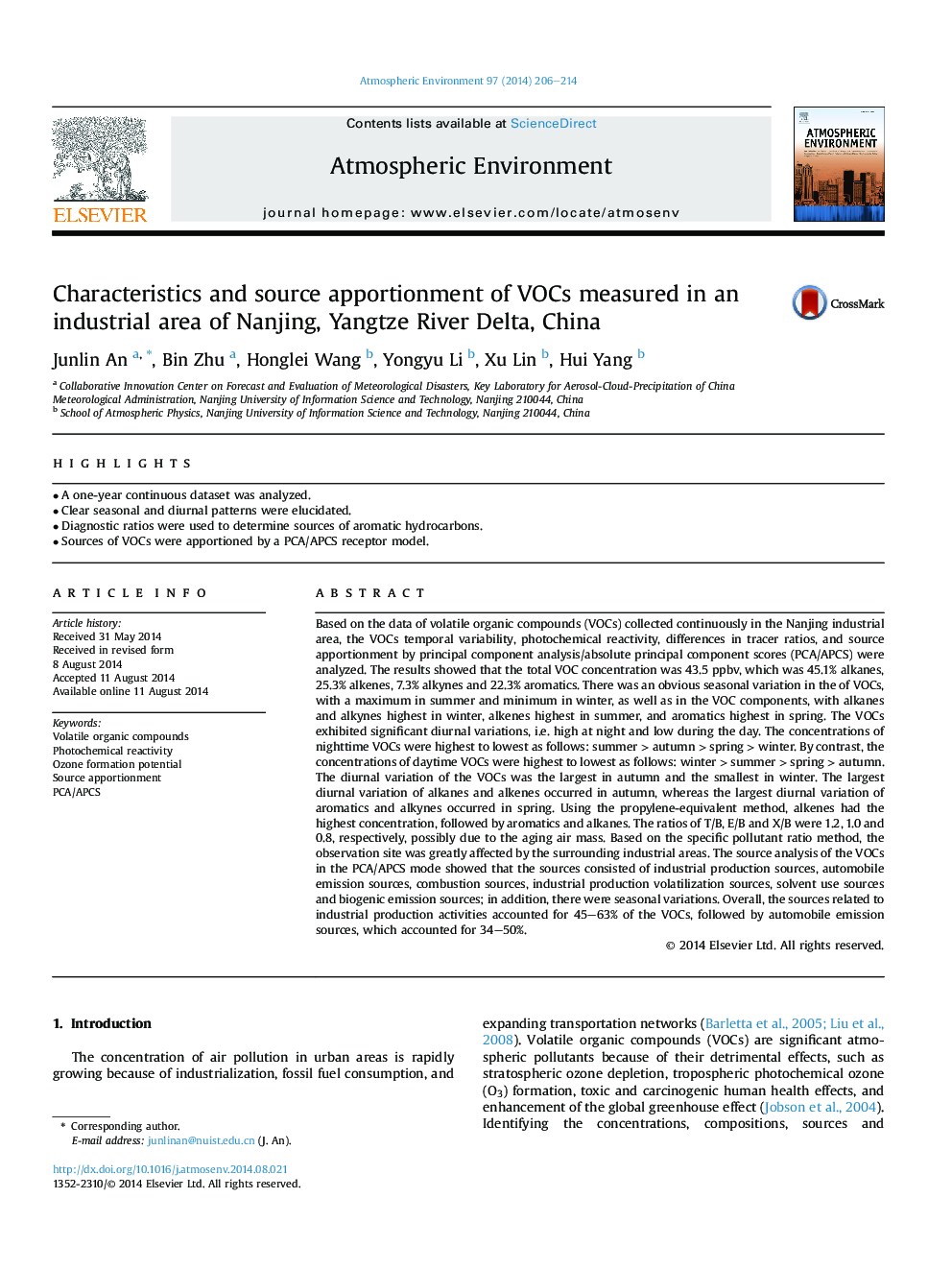| کد مقاله | کد نشریه | سال انتشار | مقاله انگلیسی | نسخه تمام متن |
|---|---|---|---|---|
| 6339783 | 1620374 | 2014 | 9 صفحه PDF | دانلود رایگان |
عنوان انگلیسی مقاله ISI
Characteristics and source apportionment of VOCs measured in an industrial area of Nanjing, Yangtze River Delta, China
دانلود مقاله + سفارش ترجمه
دانلود مقاله ISI انگلیسی
رایگان برای ایرانیان
کلمات کلیدی
موضوعات مرتبط
مهندسی و علوم پایه
علوم زمین و سیارات
علم هواشناسی
پیش نمایش صفحه اول مقاله

چکیده انگلیسی
Based on the data of volatile organic compounds (VOCs) collected continuously in the Nanjing industrial area, the VOCs temporal variability, photochemical reactivity, differences in tracer ratios, and source apportionment by principal component analysis/absolute principal component scores (PCA/APCS) were analyzed. The results showed that the total VOC concentration was 43.5 ppbv, which was 45.1% alkanes, 25.3% alkenes, 7.3% alkynes and 22.3% aromatics. There was an obvious seasonal variation in the of VOCs, with a maximum in summer and minimum in winter, as well as in the VOC components, with alkanes and alkynes highest in winter, alkenes highest in summer, and aromatics highest in spring. The VOCs exhibited significant diurnal variations, i.e. high at night and low during the day. The concentrations of nighttime VOCs were highest to lowest as follows: summer > autumn > spring > winter. By contrast, the concentrations of daytime VOCs were highest to lowest as follows: winter > summer > spring > autumn. The diurnal variation of the VOCs was the largest in autumn and the smallest in winter. The largest diurnal variation of alkanes and alkenes occurred in autumn, whereas the largest diurnal variation of aromatics and alkynes occurred in spring. Using the propylene-equivalent method, alkenes had the highest concentration, followed by aromatics and alkanes. The ratios of T/B, E/B and X/B were 1.2, 1.0 and 0.8, respectively, possibly due to the aging air mass. Based on the specific pollutant ratio method, the observation site was greatly affected by the surrounding industrial areas. The source analysis of the VOCs in the PCA/APCS mode showed that the sources consisted of industrial production sources, automobile emission sources, combustion sources, industrial production volatilization sources, solvent use sources and biogenic emission sources; in addition, there were seasonal variations. Overall, the sources related to industrial production activities accounted for 45-63% of the VOCs, followed by automobile emission sources, which accounted for 34-50%.
ناشر
Database: Elsevier - ScienceDirect (ساینس دایرکت)
Journal: Atmospheric Environment - Volume 97, November 2014, Pages 206-214
Journal: Atmospheric Environment - Volume 97, November 2014, Pages 206-214
نویسندگان
Junlin An, Bin Zhu, Honglei Wang, Yongyu Li, Xu Lin, Hui Yang,